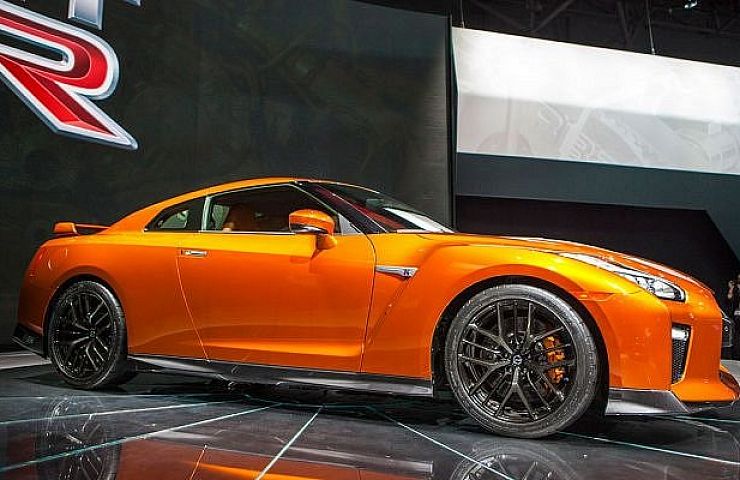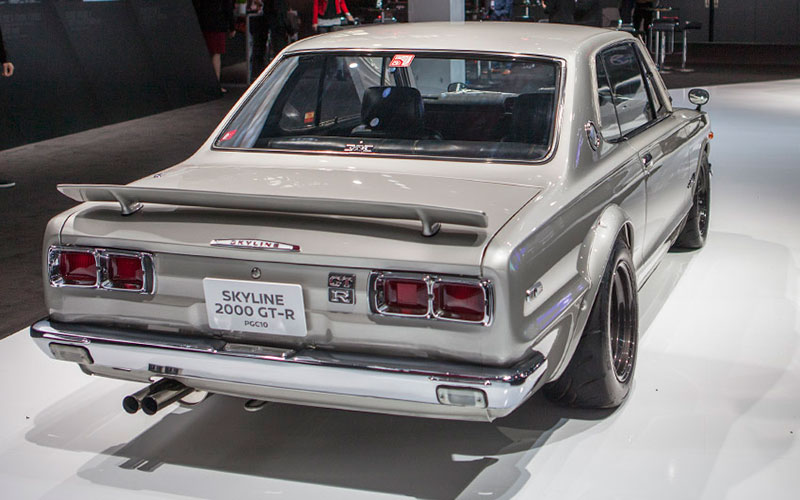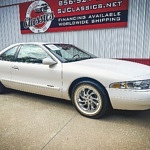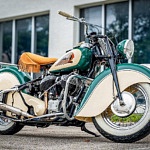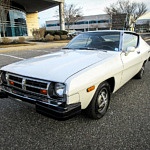The Nissan GT-R is arguably the most formidable sports car ever to emerge from Japan. To give the model its due, Nissan assembled all six generations of the storied GT-R under one roof at this year’s New York auto show, which runs through April 3.
What makes the display so striking is that most of the models are unknown to American car enthusiasts. Except for the current generation, they were not sold in North America.
The GT-R’s ferocious power and quick cornering earned it the nickname Godzilla in the late 1980s. But in fact, the GT-R began life in 1969 as a top-of-the-line variant of Nissan’s Skyline. The formula is familiar to any hot-rodder. Nissan crammed an advanced twin-cam multi-valve triple-carbureted straight-six under its angry hood and immediately took it racing. With 230-250 horsepower on tap, race versions dominated Japanese touring car competitions in the late 1960s and early 1970s.
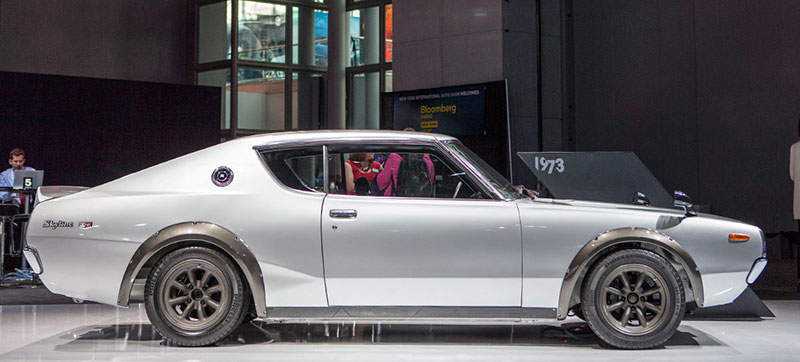
The second-generation “Kenmeri” GT-R debuted at the 1972 Tokyo Motor Show in full racing regalia, but only 197 were built before the racing program closed.
The winning streak was short-lived. By 1973, the oil crisis combined with tighter emissions restrictions put the brakes on Nissan’s racing program. As a result, only 197 second-generation GT-Rs—with fastback styling and the first of the quad round taillights—were built. That makes the second-generation model the rarest of the line.
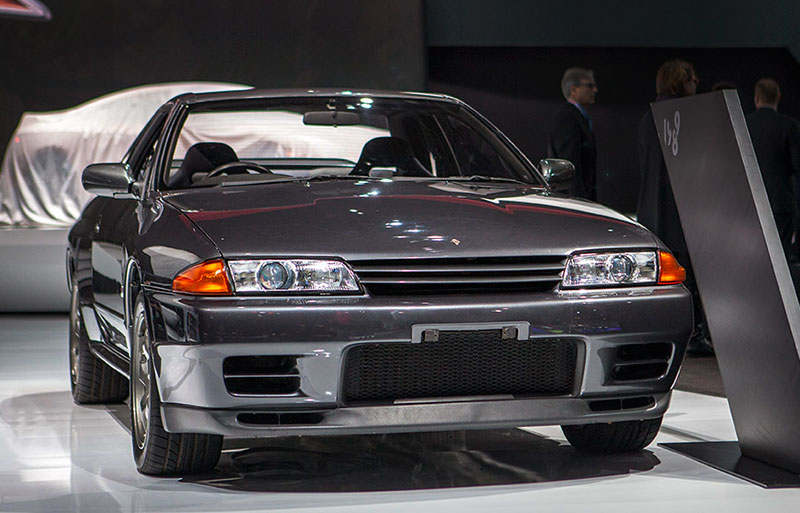
The R32 marked the return of the GT-R and was christened Godzilla by western fans due to its supercar-killing performance.
From there, the GT-R name went on hiatus until 1989, when Nissan re-introduced the name on the R32 generation as a twin-turbo monster with all-wheel-drive and four-wheel-steering. Like its predecessor, it went immediately into battle in Japan’s premier touring car series. It won every single race in the four years it competed. Its reputation for prowess soon crossed the Pacific.
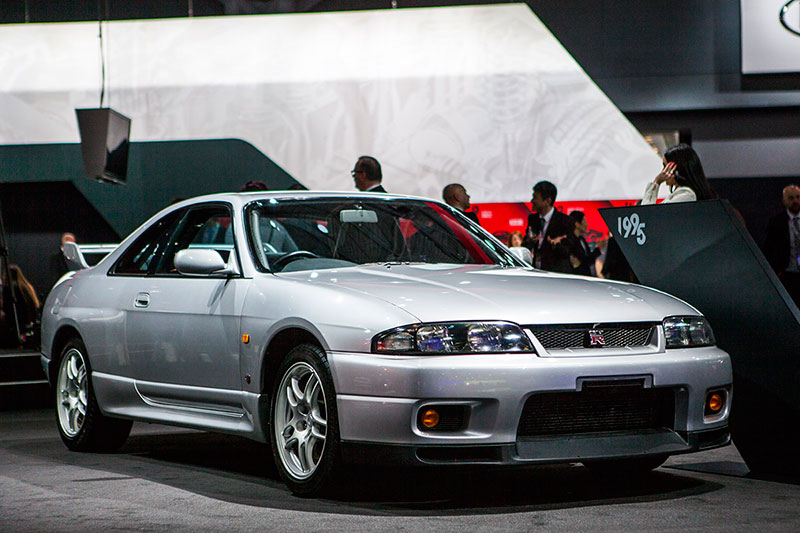
This is the very car Nissan used to break the eight-minute barrier at the Nürburgring. Aside from a roll cage, the car is stock.
As a follow-up, the R33 Skyline GT-R was launched in 1995. These days, every manufacturer and their mother compete for the fastest lap time around the famed Nürburgring circuit, but 20 years ago Nissan became the first production car to break the eight-minute mark, further enhancing the GT-R’s legendary status.
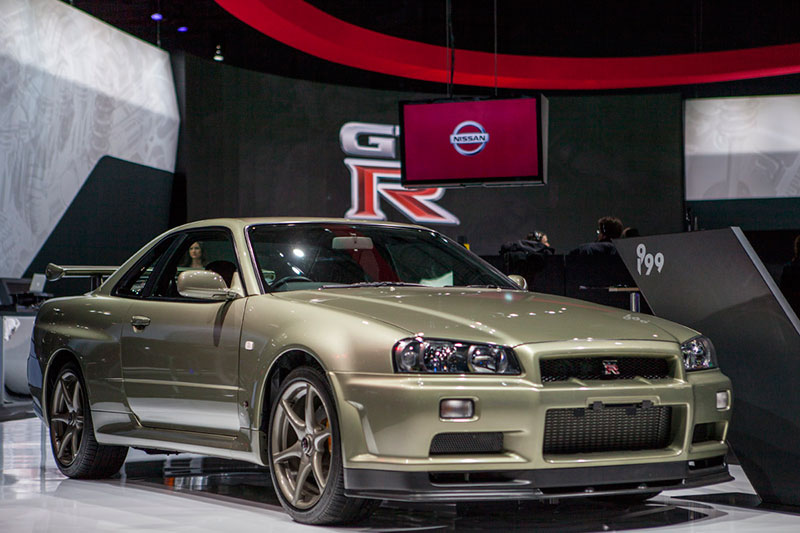
The R34 was the final Skyline GT-R, and this example is one of 285 M-Spec Nur editions from Nissan’s own stash.
In 1999, the R34 Skyline GT-R was launched. It became the pinnacle of the breed, desired by fans from around the world, despite the fact that it could only be driven in the US in the virtual world of racing simulators. The specific example on display in New York was particularly significant because it’s an M-Spec Nur edition. These cars have an upgraded suspension, interior and aero bits, and were part of a final run of 285 units that concluded the Skyline GT-R’s production run.
In 2007, when the current generation R35 GT-R launched, it was divorced from its Skyline base. For the first time, the car was offered globally, and it became known simply as the Nissan GT-R. The New York display was a build-up to the launch of the 2017 GT-R, updated with a new face and a bump up to 565 stampeding horses.
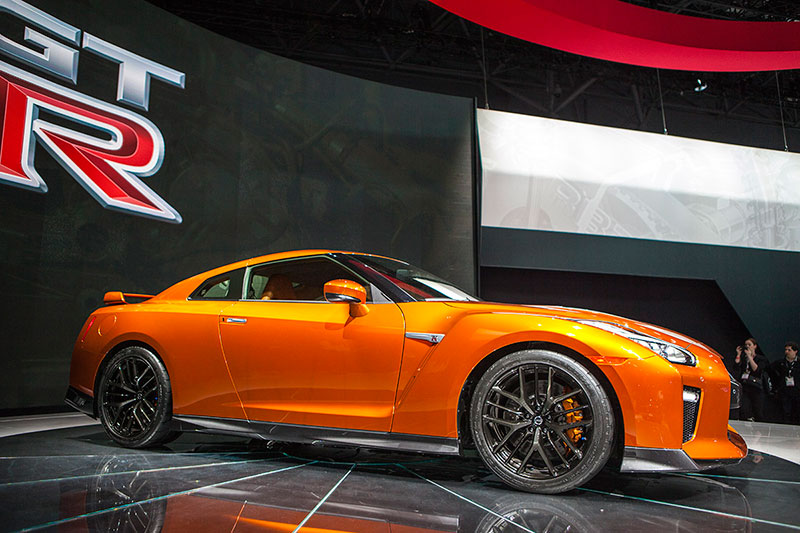
The 2017 GT-R was shown in the a new Blaze Metallic color, up 20 horsepower from last year’s model for a whopping 565.
The first thing we noticed was that the larger grille more closely resembled that of its Skyline GT-Rs predecessors, a styling cue that Shiro Nakamura, Nissan’s head of design, confirmed to us.
For years, the owners of more expensive dream cars have been able to point to one shortcoming with the Nissan GT-R: lack of prestige. Despite the fact that the family crest on the GT-R’s hood represents decades of motorsport prowess, it still shares a badge with the likes of the lowly Sentra. Yet, Nissan’s impressive show of the GT-R’s heritage in New York should help put the car on the high pedestal it deserves.
See Nissan GT-R Cars for sale on eBay.

